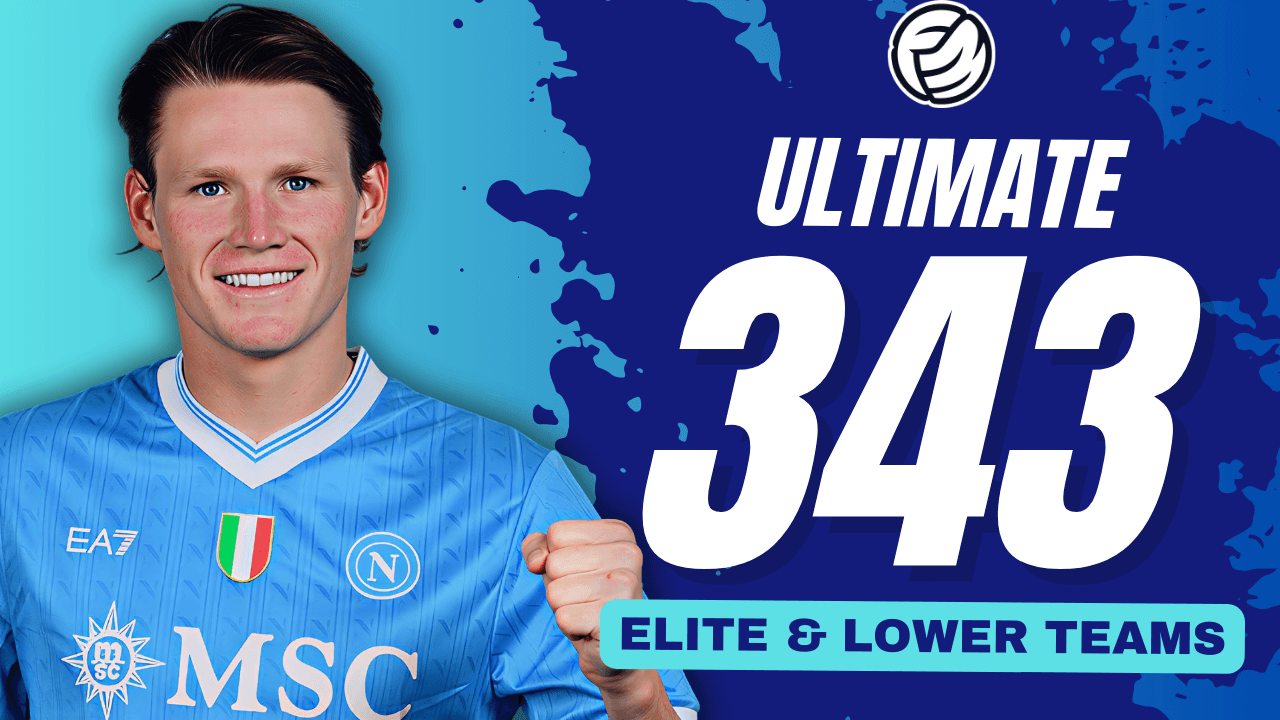
Set-pieces
Written by tbendisSet-pieces are becoming a more important part of modern day football with each passing year. With the introduction of sophisticated sports-science technology and the improvement of people’s knowledge of fitness and diet, people, and footballers as a result, have become physically stronger and well-tuned, meaning aerial battles are contested much more frequently in the current era of football than they were twenty years ago.
Direct Free Kicks
The most important attribute for a free-kick taker to have is Free Kick Taking, to state the obvious. However, that does not make this the only important skill. For a free-kick taker to be able to create a goalscoring opportunity for others, or to threaten the goal himself, he needs to have a good Technique, as well as at least one more good attribute among Passing, Crossing, and Long Shots. It all depends on what kind of free-kick you want to be taken.If you are a team without much physical presence, you will be looking to score directly from your free-kicks. Otherwise, the other team will find it easy to beat your diminutive team to the ball, provided they are not as diminutive as your team. In this case, you will want to have someone who has high Free-Kick Taking and Long Shots attributes, as well as Technique . Ideally, your set-piece maestro should have the Preferred Player Move "Tries long range free kicks", otherwise when he could theoretically take a set-piece from reasonable shooting range, he might make a short pass instead.
There are not too many variables in this situation, your player will either score, or he doesn’t. It is, however, the only way you're going to score with a physically weak team.
Corners and indirect Free Kicks
Let’s move on to corners and free-kicks in non-shooting areas. In general, a football team will have two tall, strong central defenders, a physically capable defence minded midfielder, and maybe even a target man too. You will want to have your aerial threats in the positions which they are most dangerous. These positions are at either post, or attacking the six-yard box. If you have the players needed to threaten from these positions, your set-piece taker will have a variety of targets to attempt to feed the ball to.How to deal with defending team attacking on the break
Not many teams can score from every set-piece which they have, and a lot of the time, the defending team will get the opportunity to attack you on the break while the majority of your team is still in their box. For this reason, you need to have sufficient cover to deny the opposition the chance to score on the break. This means that you should have at least two, if not three, players standing on the halfway line ready for any attempt which the opposition makes to score on break.Set-piece routine if you don't lose the ball
Let's assume you don't lose the ball. How do you take a set-piece so that everything works out? If your team lacks a set-piece taker who can supply his team mates with quality crosses into the box, or if your team lacks the height needed to challenge for these balls, it just becomes a piece of luck and determination by your players. If you are using a better team with a player who is capable of taking quality set-pieces, and you do have the players to challenge in the air, there are a number of set-piece strategies which you can utilise. The most favoured set-piece routine is to have your set-piece taker aim for the near post, and to have your most lethal players (aerially) either set to “Near Post Flick On” or to “Attack Near Post”. Your third most lethal player is set to “Challenge Keeper”, and you can have your other players attacking the far post, or wherever else inside or outside the box. What this does is it takes the opposition goalkeeper almost out of the equation. A near post cross is almost uncatchable for a goalkeeper, and your players are more likely to get to the ball before your opposition, thus giving you a better chance of scoring.RECAP:
Corner Taker - “Aim for near post”. Three players with highest Heading - "Attack near post", "Near post flick on", “Challenge Keeper”. At least two players - “Stay Back”
Free-kicks are a little different. We all want that ideal free-kick taker, but, barring the fact that you already have him in your squad, they're pretty damned hard to get. The ones that are available, however, are so highly valued that most teams are priced out of any chance of purchasing that player. Even if you do manage to sign a set-piece specialist, it could take years for them to perfect their set-pieces into the routine which you are looking for. If you are in this situation, you could let your set-piece taker have the freedom to create an opportunity which he envisions. Who knows, maybe he can see something which you can’t.
So that is a brief summary of set-pieces, an important aspect of modern day football. If you can dominate from set-pieces, you have a very powerful weapon. While not essential, a lot of goals come from set-pieces, so you should look to take advantage of these opportunities.





![FM26 Data Tweaks [v1.1 | v1.8]](assets/downloads/fm26/fm26-data-tweaks-by-sirtavares-v2.th.png)


![TinyHips' Dark Mode Skin v5.3 [Win + MacOS] *UPDATED 26.1.1 HOTFIX*](assets/downloads/fm26/fm26-dark-mode-skin.th.png)

Discussion: How to create a successful tactic on Football Manager
19 comments have been posted so far.
Change Log 27/05/2017
5. Team Instructions - Completely revamped to reflect recent changes in FM
14. Sideline Shouts - Page added to reflect importance of sideline shouts
but anyway, I still confuse. about attack near post and near post flick on,what kindof player should be suite? I mean, if we have good header,then why we ask him to flick instead of attack directly to the goal?and if we have player at far post who great header,why we didnt give the ball to him,but flick from near post instead?
and what about stand on far post? I quite didnt understand. so this just distraction? not the goal scorer?
how about attack from deep?
Freekicks:
I'm afraid that you're unable to have two free kick takers for the time being ( at least, to my knowledge), so you would have to suffice with having one of Ronaldo / Bale taking both free kicks around the box, as well as further up field.
Aiming a free kick towards the best header is normally used when a shooting opportunity is not on - so, for example, if a free-kick is from a wider position, the free-kick will be aimed towards the player who has the best heading attributes.
Taking a long free-kick means that if you have the ball deep in your opponents half, the ball will be passed up field in a more direct manner, instead of passing the ball short, and keeping hold possession. Choosing a long freekick is best if you're playing a more direct tactic, where as a short free kick is best if you have players that can play with a fast tempo and small passes.
Corners:
A near post flick would require a player to essentially 'flick' the ball backwards towards either the center of the box, or towards the far post - a good example of this in real life could be seen with Manchester City. Often during matches Demichelis flicks the ball backwards for someone else to score. If you were to use this, then make sure to have players placed both centrally and attacking the back post.
Attacking near post is where the player attack the ball at the near post in an attempt to score. This differs to the near post flick on as the near post flick on does not try to score - simply move the ball on in order to allow someone else to score. If you're going to use this, then make sure the player who's attacking the near post has good attributes in the following areas: Heading, Jumping reach and strength. Other attributes that can be included are Balance and Bravery.
I hope this cleared things up for you! :-)
I don't think that there is a way of setting different players to take long and short range free kicks. Usually, the players that are good at free kicks tend to be
corner kicks too. Also, long will play a long ball into the box as far as they can, whereas best header will go higher, for the best header of the ball to jump up and head it as no one else can reach,
The difference between each of these is actually quite big. Attack near post will make your player run to the near post and attempt to head the ball in. On the other hand, near post flick on will make the player at the near post head the ball to the far post over the defenders instead of shooting himself. Attack far post is similar to attack near post, as the players will try to head the ball in at the far post, and I think Stand on far post will attempt to distract other team defenders and create space in the area.
Free Kick
my problem on this set piece ,is , FM is sometime unreasonable. for the free kick from very long distance,where player would pass it to another team mate instead of shot on goal, they put my free kick taker here,which is not effetive. I mean,if you see real madrid , they would put cristiano ronaldo or gareth bale as free kick taker ,from reasonable range to shot on goal. if the free kick place is too far to be shooted, then xabi would take instead ,so he could aim the ball better. but in fm, this doesnt happen. all free kick would taken by ronaldo ,except the free kick from touchline..
any souliton?
I also didnt understand,what is "long" option on free kick aim optin mean?
couldnt it become "long and to best header"?
corner kick
any explanation about the different between "near post flick on" and attach near post?
how about "atack from deep and lurk outside area'?
and "attack far post" with "stand on far post"?
I didnt know which is the right time to chose them.
Kudos!
@Bert: Thank you for contributing. We have some new guides in the works, I'll ask you for more contributions soon
Thanks for this fantastic guide.
Just one thing I would like to mention... earlier, according to my experience it is not the best option to mark tightly a pacey opponent as they will be able to lose your defender who is not that fast...
what do you think?
Good read for the other sectors, and really good help in the parts that I'm not as comfortable with.
Nice guide all round!